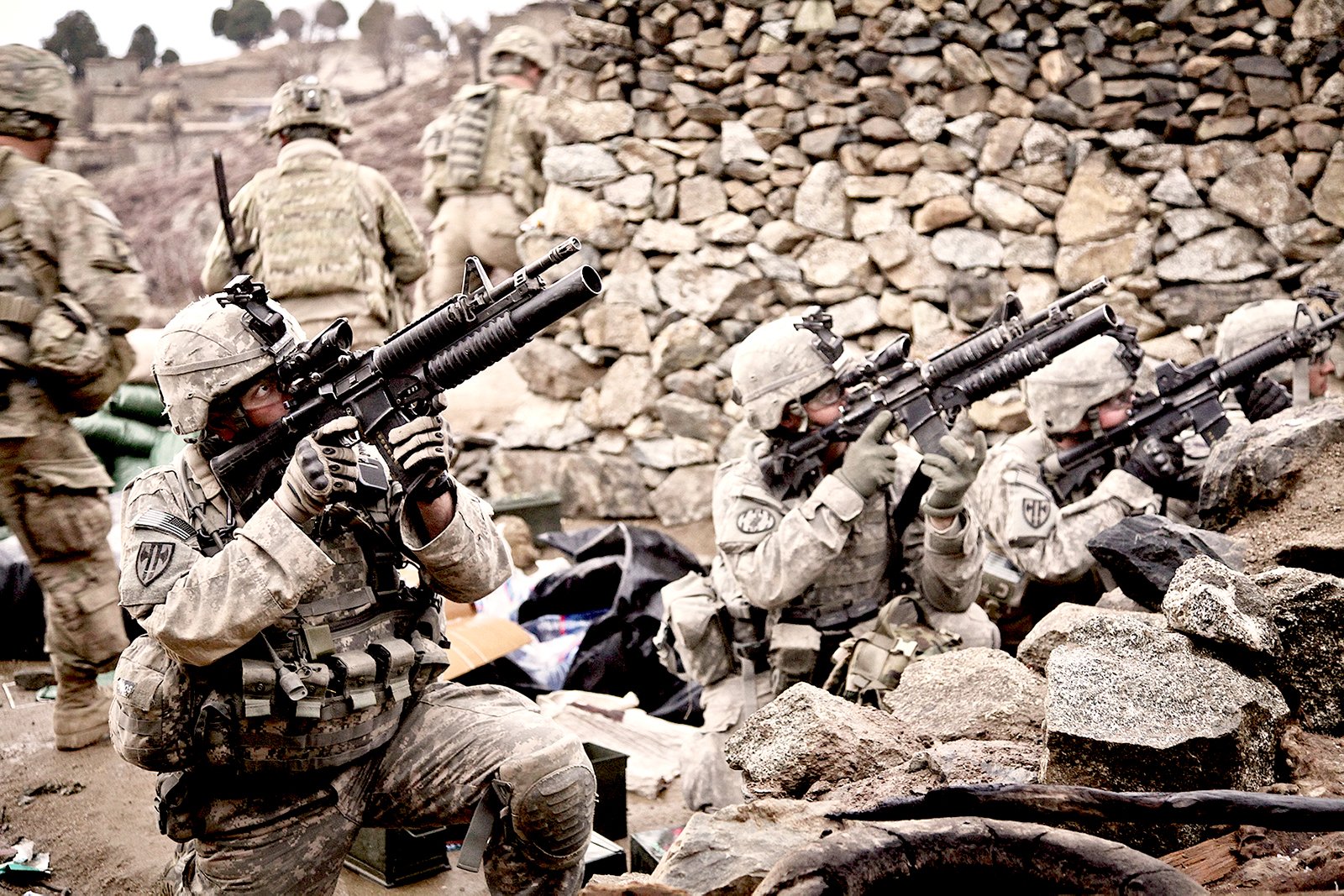
Edited screenshot from The Hornet’s Nest/Freestyle Releasing.
Another bullet slammed into the rocky slope beside journalist Mike Boettcher. The Taliban sniper fired again, sending another large-caliber bullet whizzing between the Americans who were scattered among the boulders. Boettcher kept his camera rolling but worried his son Carlos might have been hit. The father-and-son team was embedded with soldiers of the 101st Airborne Division, but getting good footage was now the last thing on his mind.
Eventually the paratroopers forced the sniper to displace, and Mike and Carlos Boettcher were reunited, both unscathed.
“I told you don’t leave my side! This is a damn war zone, Carlos,” Mike can be heard screaming off-camera.
When it comes to documentaries about the war in Afghanistan, Restrepo still reigns supreme. But while the award-winning documentary from Sebastian Junger and Tim Hetherington is the most acclaimed film of its kind, The Hornet’s Nest is a must-watch for anyone seeking a closer look into America’s longest war.
Mike Boettcher describes the documentary as a “real-life narrative feature.” The feeling that his film is more than a documentary comes from the added drama of Mike and Carlos’ strained relationship. Their final attempt to bond amid the war that surrounds them provides an additional storyline that unfolds like a scripted feature film.
Between 2010 and 2011, the duo embedded with three Army brigades and one Marine battalion on their deployments to Afghanistan. While the filmmakers survived their extended stay in Afghanistan, 44 members of the units they embedded with did not. The combat footage they recorded is as intense as any existing documentary, but the audio surpasses them all. The sounds of bullets snapping and whizzing overhead are so clear it’s hard to believe they weren’t created in a studio and added during editing.
While the combat footage is jarring and the Boettchers’ relationship is compelling, it’s the documentary’s ending that transforms The Hornet’s Nest from an average film to a must-watch. The Boettchers were present at the Battle of Barawala Kalay Valley: a two-day mission that devolved into nine days of heavy fighting. Before the Americans prevailed, six US soldiers were killed in action.
The entire battle unfolds in the film’s final act, concluding with an emotionally devastating battlefield memorial service. The final scene provides a rare glimpse into one of the most sacred military traditions. As the final roll call is read and the surviving soldiers fight to keep their bearings, it becomes difficult to watch. The heart-wrenching conclusion serves as an uncomfortable reminder of the steep cost of the war in Afghanistan.
Read Next: Danish Documentary ‘Armadillo’ Shows Unvarnished Reality of Afghan Combat

Mac Caltrider is a senior staff writer for Coffee or Die Magazine. He served in the US Marine Corps and is a former police officer. Caltrider earned his bachelor’s degree in history and now reads anything he can get his hands on. He is also the creator of Pipes & Pages, a site intended to increase readership among enlisted troops. Caltrider spends most of his time reading, writing, and waging a one-man war against premature hair loss.
BRCC and Bad Moon Print Press team up for an exclusive, limited-edition T-shirt design!
BRCC partners with Team Room Design for an exclusive T-shirt release!
Thirty Seconds Out has partnered with BRCC for an exclusive shirt design invoking the God of Winter.
Lucas O'Hara of Grizzly Forge has teamed up with BRCC for a badass, exclusive Shirt Club T-shirt design featuring his most popular knife and tiomahawk.
Coffee or Die sits down with one of the graphic designers behind Black Rifle Coffee's signature look and vibe.
Biden will award the Medal of Honor to a Vietnam War Army helicopter pilot who risked his life to save a reconnaissance team from almost certain death.
Ever wonder how much Jack Mandaville would f*ck sh*t up if he went back in time? The American Revolution didn't even see him coming.
A nearly 200-year-old West Point time capsule that at first appeared to yield little more than dust contains hidden treasure, the US Military Academy said.












